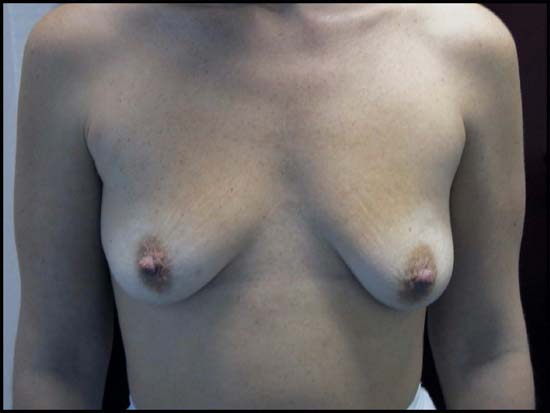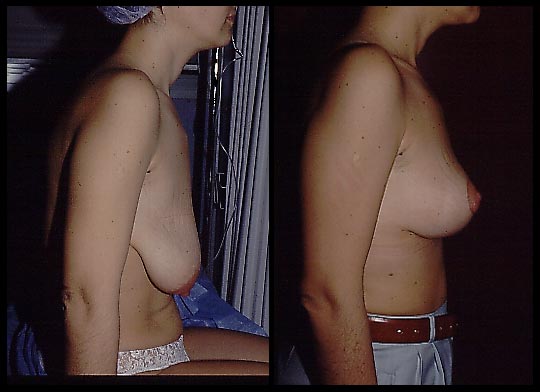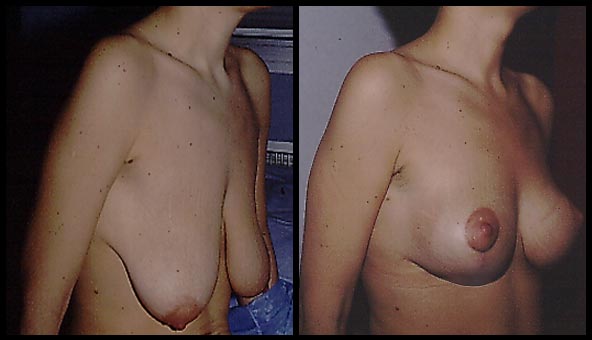
Mastopexi
This operation is planned and designed to improve the appearance of the breast when, due to a heavy weight loss or to the heaviness of the mamma itself, the areola finds itself in an unnatural location. This imperfection is called ptosis. The ptosis may be of various degrees and it is rated on the basis of the actual distance between the submammary sulcus and the lowest point of the breast. Another parameter to be considered is the distance between areola and jugular fossa, which should be between 22 and 24 cm. The same can be said about the distance between nipple and submammary sulcus that shouldn't be more than 7 cm long. If the breast doesn't fulfil these parameters, when compatible with the subject's own build, one can legitimately talk about mammary ptosis. The ptosis can be responsible of an unattractive look, but also of several discomforts such as, above all in the hot season, annoying irritations and infections (intertrigo) at the level of the submammary sulcus.
The uplifting of the breast will solve all these inconveniences, besides it will grant the breast a better appearance and will allow wearing a wider variety of clothes. The operation, though certainly based on fixed general principles, must vary according to each pateint's specific needs. The kind of correction must be carefully evaluated case by case, while considering all the possible variations of shape, volume and projection that should lead to a better balance and harmony with the other parts of the body. Should the superior pole of the breast be particularly empty, due to the force of gravity, it is advisable to couple the mastopexy with an augmentative mammaplasy. In such case an implant is inserted behind the gland to add volume and turgidity to the mamma. This will also grant a better projection.
 |
| Image of ptotic mammas |
Surgical Procedure
Mastopexies are not all alike, they are based on the same principles, but need to be modified so as to fit each specific case.
They have in common:
- the removal of part of the mammary gland inferior pole
- the repositioning of the areola-nipple complex so as to prevent the breast from looking excessively long
- the conization of what's left of the gland so as to grant the breast a more pleasing shape.
A portion of skin and fat/gland is generally removed. The residual gland, as well as the skin, are molded in order to reduce the scars to a bare minimum.
 |
 |
 |
| Examples of pre and post-op pictures |
Scars
It is true that scars depend half on the surgeon half on the patient, but they are also influenced by the initial volume and shape of the breast.
After the operation one can normally observe:
- a scar all around the areola, scarcely visible, due to the difference in color between the skin of the areola and that of the rest of the breast
- a vertical scar connecting the first to the submammary sulcus
All these scars will tend to fade within 4-5 months and blend in with the surrounding skin, but the process takes time. Should the scars be too evident, they will be removed under local anesthesia, no earlier than one year after the primary operation. This further small operation will cause the patient very little trouble.
Duration of the procedure
The operation will take approximately 3 hours.
Anesthesia
The procedure is performed under general anesthesia, the patient will sleep throughout the whole operation.
Hospital stay
According to the chosen procedure, the patient will be hosted in the clinic 1 or 2 days.
